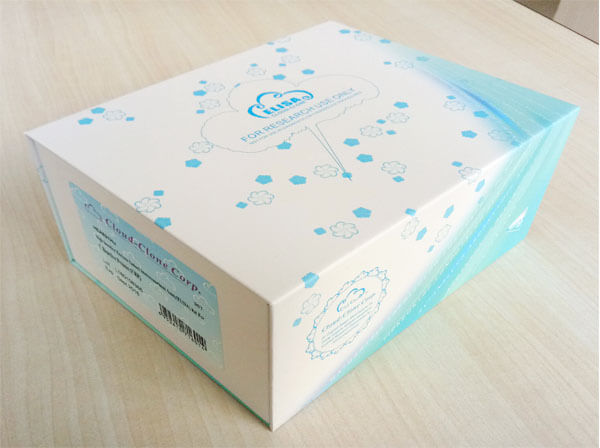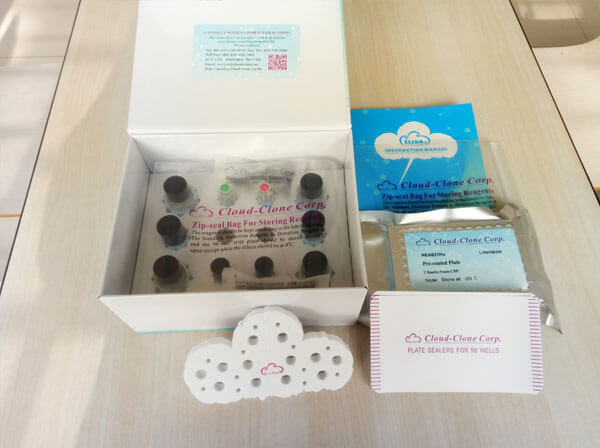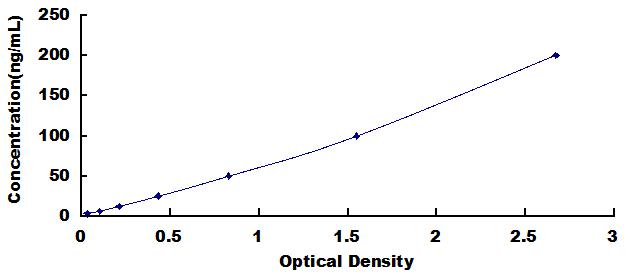ELISA Kit for Anti-Epithelial Neutrophil Activating Peptide 78 Antibody (Anti-ENA78) 

CXCL5; SCYB5; Chemokine C-X-C-Motif Ligand 5; Small Inducible Cytokine Subfamily B(Cys-X-Cys),Member 5; Neutrophil-activating peptide ENA-78
- UOM
- FOB US$ 595.00 US$ 850.00 US$ 3,825.00 US$ 7,225.00 US$ 59,500.00
- Quantity
Overview
Properties
- Product No.AEA860Mu
- Organism SpeciesMus musculus (Mouse) Same name, Different species.
- ApplicationsEnzyme-linked immunosorbent assay for Antibody Detection.
Research use only - DownloadInstruction Manual
- CategoryCytokineInfection immunity
Sign into your account
Share a new citation as an author
Upload your experimental result
Review

Contact us
Please fill in the blank.
Recovery
Matrices listed below were spiked with certain level of Anti-Epithelial Neutrophil Activating Peptide 78 Antibody (Anti-ENA78) and the recovery rates were calculated by comparing the measured value to the expected amount of Anti-Epithelial Neutrophil Activating Peptide 78 Antibody (Anti-ENA78) in samples.
| Matrix | Recovery range (%) | Average(%) |
| serum(n=5) | 96-105 | 102 |
| EDTA plasma(n=5) | 80-90 | 79 |
| heparin plasma(n=5) | 95-105 | 98 |
Precision
Intra-assay Precision (Precision within an assay): 3 samples with low, middle and high level Anti-Epithelial Neutrophil Activating Peptide 78 Antibody (Anti-ENA78) were tested 20 times on one plate, respectively.
Inter-assay Precision (Precision between assays): 3 samples with low, middle and high level Anti-Epithelial Neutrophil Activating Peptide 78 Antibody (Anti-ENA78) were tested on 3 different plates, 8 replicates in each plate.
CV(%) = SD/meanX100
Intra-Assay: CV<10%
Inter-Assay: CV<12%
Linearity
The linearity of the kit was assayed by testing samples spiked with appropriate concentration of Anti-Epithelial Neutrophil Activating Peptide 78 Antibody (Anti-ENA78) and their serial dilutions. The results were demonstrated by the percentage of calculated concentration to the expected.
| Sample | 1:2 | 1:4 | 1:8 | 1:16 |
| serum(n=5) | 98-105% | 90-104% | 96-103% | 87-103% |
| EDTA plasma(n=5) | 96-105% | 83-97% | 94-103% | 78-89% |
| heparin plasma(n=5) | 95-103% | 93-101% | 91-99% | 85-92% |
Stability
The stability of kit is determined by the loss rate of activity. The loss rate of this kit is less than 5% within the expiration date under appropriate storage condition.
To minimize extra influence on the performance, operation procedures and lab conditions, especially room temperature, air humidity, incubator temperature should be strictly controlled. It is also strongly suggested that the whole assay is performed by the same operator from the beginning to the end.
Reagents and materials provided
| Reagents | Quantity | Reagents | Quantity |
| Pre-coated, ready to use 96-well strip plate | 1 | Plate sealer for 96 wells | 4 |
| Standard | 2 | Standard Diluent | 1×20mL |
| Detection Reagent A | 1×120µL | Assay Diluent A | 1×12mL |
| TMB Substrate | 1×9mL | Stop Solution | 1×6mL |
| Wash Buffer (30 × concentrate) | 1×20mL | Instruction manual | 1 |
Assay procedure summary
1. Prepare all reagents, samples and standards;
2. Add 100µL standard or sample to each well. Incubate 1 hours at 37°C;
3. Aspirate and add 100µL prepared Detection Reagent A. Incubate 1 hour at 37°C;
4. Aspirate and wash 5 times;
5. Add 90µL Substrate Solution. Incubate 10-20 minutes at 37°C;
6. Add 50µL Stop Solution. Read at 450nm immediately.

Test principle
The microtiter plate provided in this kit has been pre-coated with an antigen. Standards or samples are then added to the appropriate microtiter plate wells with a Horseradish Peroxidase (HRP)-conjugated secondary antibody. After TMB substrate solution is added, those wells that contain Anti-Epithelial Neutrophil Activating Peptide 78 Antibody (Anti-ENA78) will exhibit a change in color. The enzyme-substrate reaction is terminated by the addition of sulphuric acid solution and the color change is measured spectrophotometrically at a wavelength of 450nm ± 10nm. The concentration of Anti-Epithelial Neutrophil Activating Peptide 78 Antibody (Anti-ENA78) in the samples is then determined by comparing the O.D. of the samples to the standard curve.
Giveaways
Increment services
Citations
- Ameliorative Effects of Curcumin on Fibrinogen-Like Protein-2 Gene Expression, Some Oxido-Inflammatory and Apoptotic Markers in a Rat Model of l-Arginine-Induced Acute Pancreatitis.Pubmed:26862043
- Ameliorative Effects of Curcumin on Fibrinogen-Like Protein-2 Gene Expression, Some Oxido-Inflammatory and Apoptotic Markers in a Rat Model of l-Arginine-Induced Acute Pancreatitispubmed:26862043
- The clinical significance of CXCL5 in non-small cell lung cancer.pubmed:29200871
- Activated CXCL5-CXCR2 axis promotes the migration, invasion and EMT of papillary thyroid carcinoma cells via modulation of β-catenin pathwayPubmed:29471001
- Activation of CXCL5-CXCR2 axis promotes proliferation and accelerates G1 to S phase transition of papillary thyroid carcinoma cells and activates JNK and p38 …Pubmed: 30404567
- Phospholipase Cε plays a crucial role in neutrophilic inflammation accompanying acute lung injury through augmentation of CXC chemokine production from …Pubmed: 30634975
- Interleukin17–CXCR2 axis facilitates breast cancer progression by up-regulating neutrophil recruitmentPubmed: 31654638
- Secretions from hypochlorous acid-treated tumor cells delivered in a melittin hydrogel potentiate cancer immunotherapy34820587
- Differential expression profile of CXC-receptor-2 ligands as potential biomarkers in pancreatic ductal adenocarcinomaPubmed:35141005















